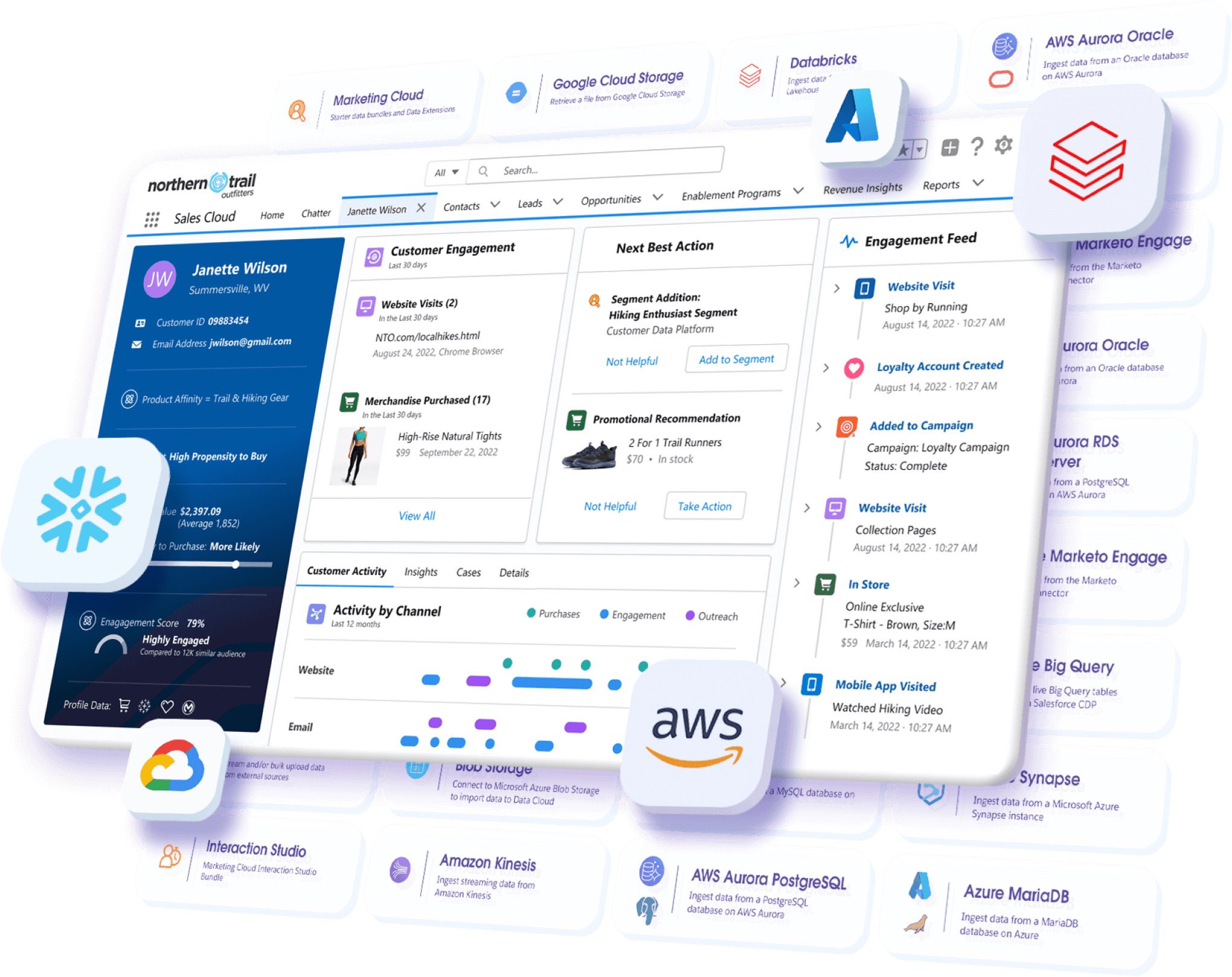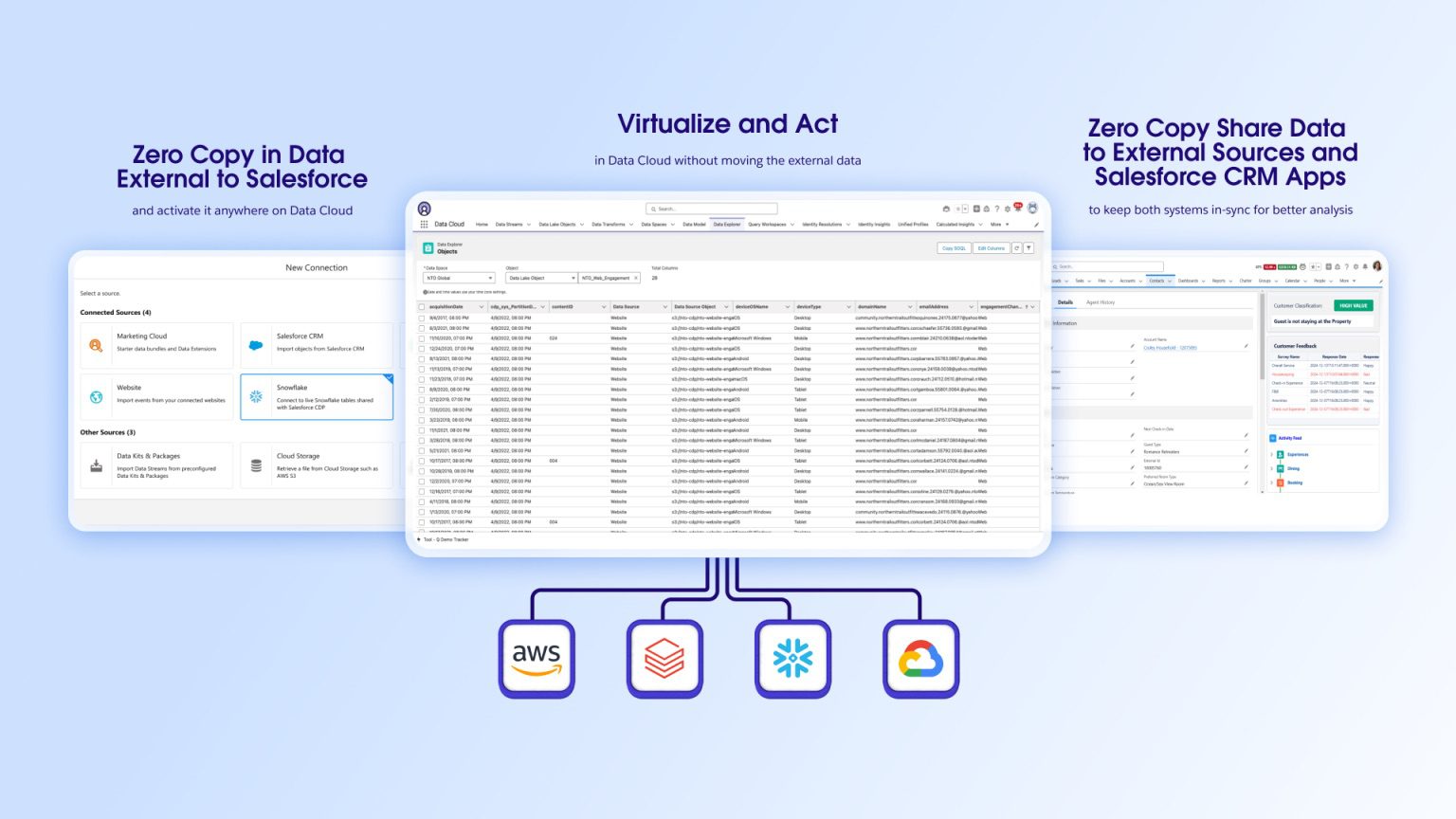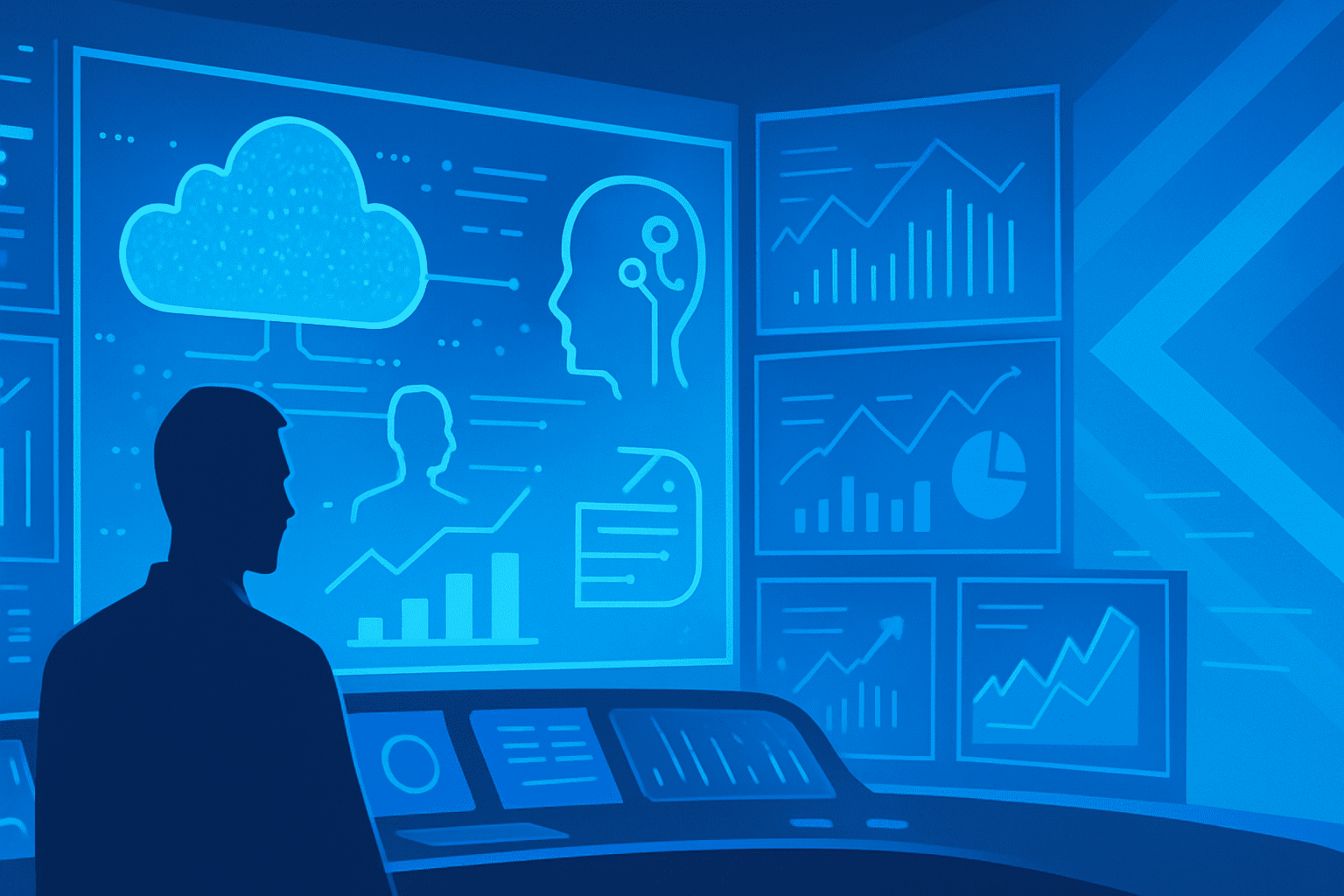Why Salesforce Data Cloud, Supported by Agentforce
Is the Next Frontier in Ad Sales
When we sit down with CROs or ad‑sales VPs these days, a familiar pattern emerges. Their CRM is bursting with advertiser history, their data lake has petabytes of streaming behavior, and their marketing team has stitched together three different CDPs—yet none of it feels actionable in the moment that matters. A sales rep preparing a proposal still has to Slack an analyst for reach counts; the analyst submits a ticket to data engineering; the numbers arrive days later—too stale to headline a pitch deck, too late to secure incremental budget.
Salesforce’s Data Cloud is marketed as a “real‑time CDP,” but that label undersells its strategic resonance for ad‑sales organizations. It’s more accurate to call Data Cloud an operating layer that sits above every warehouse, lake, and CRM table you already own and turns those assets into a living, queryable service. Combined with Agentforce—Salesforce’s generative‑AI automation framework—the platform removes the latency between data, decision, and revenue. It’s not hype; it is the connective tissue modern media and retail‑media companies have been missing.

Understanding the DNA of Data Cloud
Data Cloud’s design begins with a straightforward premise: data gravity lives where it lives. Instead of requiring wholesale migration, the platform uses zero‑copy federation to map existing Snowflake tables, Databricks notebooks, or S3 objects into a canonical Customer 360 model. Identity resolution runs in‑platform, stitching first‑party IDs with hashed device signals and consent flags. What emerges is a real‑time profile graph continuously refreshed as events stream in.
That architectural choice matters because ad‑sales velocity is measured in hours—not quarters. When a premium video campaign under‑delivers on connected TV impressions at noon, the ops lead must re‑allocate budget before primetime. Lake‑house analytics are indispensable for trend analysis, but Data Cloud excels at sub‑second queries that feed segment counts to planners, eligibility flags to ad servers, and real‑time intent to opportunity owners.
Agentforce enters once that unified profile graph exists. Generative agents grounded in Data Cloud’s truth layer can compose proposals, recommend flight optimizations, or draft insertion orders—all without hallucinating fictitious reach numbers or misclassifying PII. Think of Data Cloud as the authoritative memory, and Agentforce as the muscle memory that automates routine motions.
Where Data Cloud Meets the Ad‑Sales Lifecycle
Opportunity & Pipeline Management
Every revenue cycle begins with a question: who is most primed to buy? In traditional stacks the answer hides in disparate systems—CRM activities, web analytics, and ad‑server logs rarely intersect. With Data Cloud’s profile graph feeding directly into Salesforce Opportunity objects, sellers see live intent signals side‑by‑side with historical spend. Reach projections update the moment an audience grows, enabling reps to quote inventory with confidence instead of conservatism. Agentforce adds a second layer, automatically drafting personalized outreach that references the advertiser’s most recent brand‑site engagement, not last quarter’s CTR.
Order & Campaign Activation
The hand‑off from sales to ad‑ops is a notorious friction point. Orders arrive with segment definitions that don’t match the DSP’s taxonomy; segments make it to the DSP but stale overnight; make‑goods pile up. Data Cloud’s hashed audience sync to Google DV360, Amazon DSP, or LinkedIn bypasses manual onboarding and preserves privacy compliance. Within minutes, operations can traffic a new line item or re‑balance frequency caps. Meanwhile, Agentforce monitors pacing, flags under‑delivery, and proposes intra‑campaign reallocations—freeing human traffickers to focus on high‑touch clients, not spreadsheet gymnastics.
Marketing & Prospecting
Retail‑media networks live and die by first‑party reach. Data Cloud offers deterministic identity that can be enriched in‑line with ecommerce, loyalty, and offline transaction feeds—no third‑party lookups required. Marketers build real‑time look‑alikes that update as soon as a shopper abandons a cart or streams a new series episode. The result is an always‑on supply of high‑intent audiences ready for cross‑sell or upsell. And because those segments live inside Salesforce Marketing Cloud as well, continuity between paid media and lifecycle email is finally achievable.
Measurement, Attribution & Finance
The post‑campaign scramble to reconcile delivery, invoice, and make‑good terms is another drain on margin. By feeding impression logs, cost data, and CRM revenue back into Data Cloud, finance teams can match realized spend to booked revenue in near real time. Incrementality studies that once required weeks of offline analysis now refresh nightly dashboards. Agentforce can even draft billing summaries, flag anomalies, and suggest make‑good allocations backed by deterministic logs.
Governance & Cost Control
CIOs often push back: “We already have Databricks—why add Data Cloud?” The answer lies in governance and cost alignment. Snowflake or Databricks remain ideal for heavy ML training and historical analysis; Data Cloud owns real‑time activation, consent enforcement, and integration with Salesforce surfaces. Used together, they create a layered architecture where high‑cost compute is reserved for modeling, while low‑latency activation stays within a governed perimeter. In practice that hybrid pattern reduces total cost of ownership versus forcing every workload into a single monolith.

Agentforce: Automation That Knows the Numbers
Generative AI in a vacuum is novelty; generative AI grounded in trusted data is leverage. Agentforce draws its context from Data Cloud’s real‑time profile graph, which means an agent crafting a proposal has the same audience math your planner signed off on ten minutes ago. Early pilots show a 30‑40 percent reduction in proposal turnaround time and measurable upticks in pipeline velocity—because AEs spend less effort consolidating numbers and more time narrating value.
For ad‑ops, Agentforce acts as a watchtower: observing pacing logs, querying Data Cloud for eligible make‑good inventory, and proposing adjustments before humans notice a miss. In a market where under‑delivery erodes trust, that form of pre‑emptive remediation is more than efficiency—it is a brand advantage.
Navigating the Hype Cycle
It is tempting to treat Data Cloud as a silver bullet or to dismiss it as marketing gloss. Experience suggests a middle path: start with a narrow, revenue‑adjacent use case and iterate outward. We advise clients to begin with CRM and ad‑server unification—often the easiest integration with the highest commercial impact—then layer on marketing IDs, retail transaction feeds, and real‑time streaming. Each loop ships tangible value while sharpening governance, consent, and cost controls.
Within ninety days, most teams graduate from static audience exports to dynamic look‑alikes. By the six‑month mark, Agentforce automates proposal drafts and pacing adjustments. Twelve months in, finance monitors revenue‑per‑segment in real time—closing the data‑to‑dollars loop executives have sought for a decade.
The Executive Checklist
-
Do we know, in real time, which audiences are shrinking, growing, or qualifying for premium packages?
-
Can our ops team push a corrected segment to a DSP without filing an IT ticket?
-
Are finance and ad‑ops working from the same impression ledger?
If the honest answer is “not yet,” Data Cloud, and Agentforce, belong on your roadmap.
Building Trust Starts With A Conversation.
Ready for a Deeper Conversation?
V2 Strategic Advisors has helped media, streaming, and retail‑media companies navigate twenty years of technology shifts. Our Data Cloud Strategy Sprint translates possibilities into a phased, ROI‑anchored blueprint: clear use cases, consumption guardrails, and an Agentforce automation plan.
Book a 60‑minute session to see how your first‑party data can become a revenue engine, without rewriting your stack from scratch.

